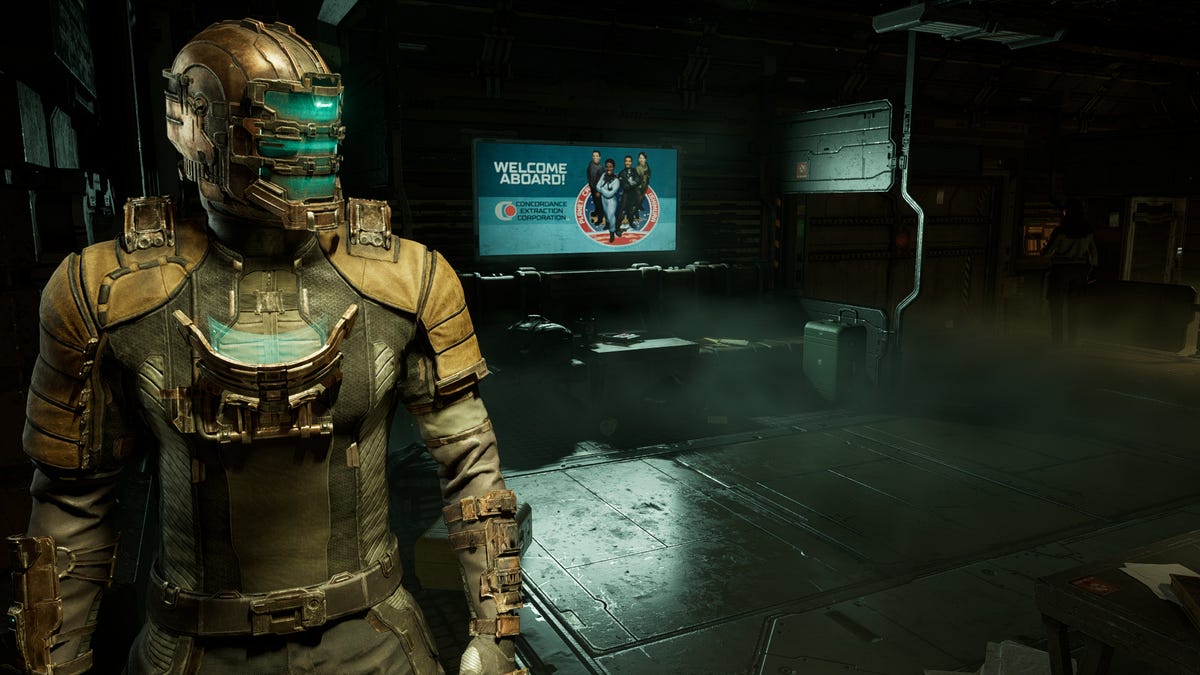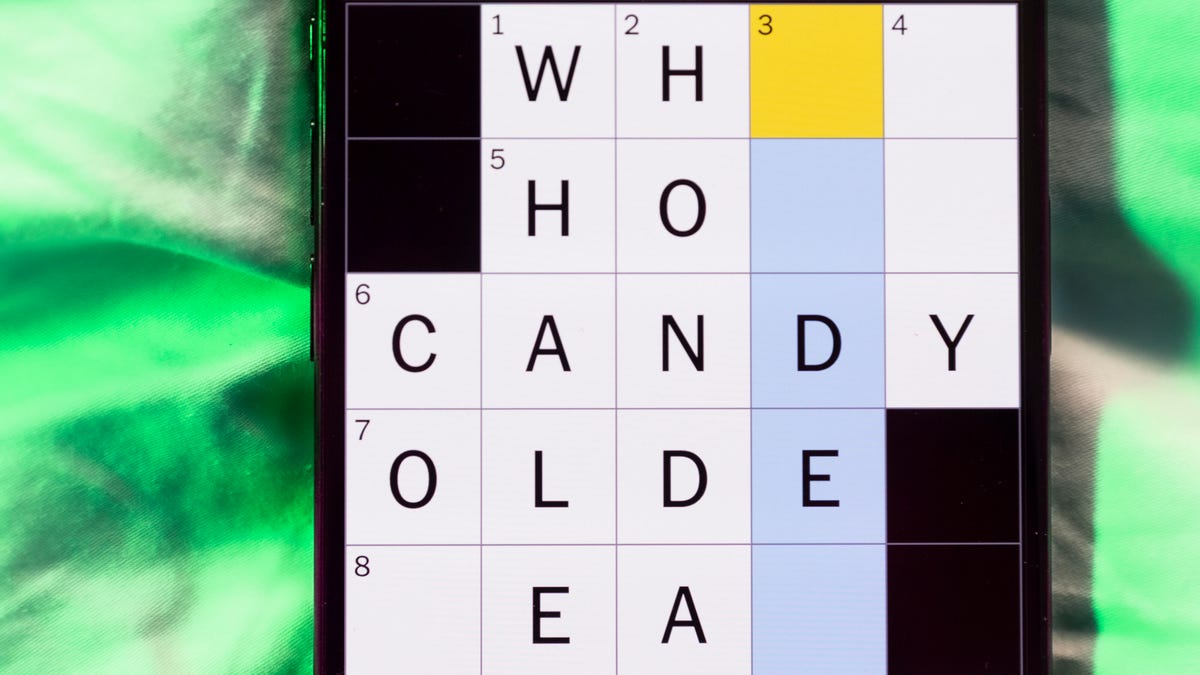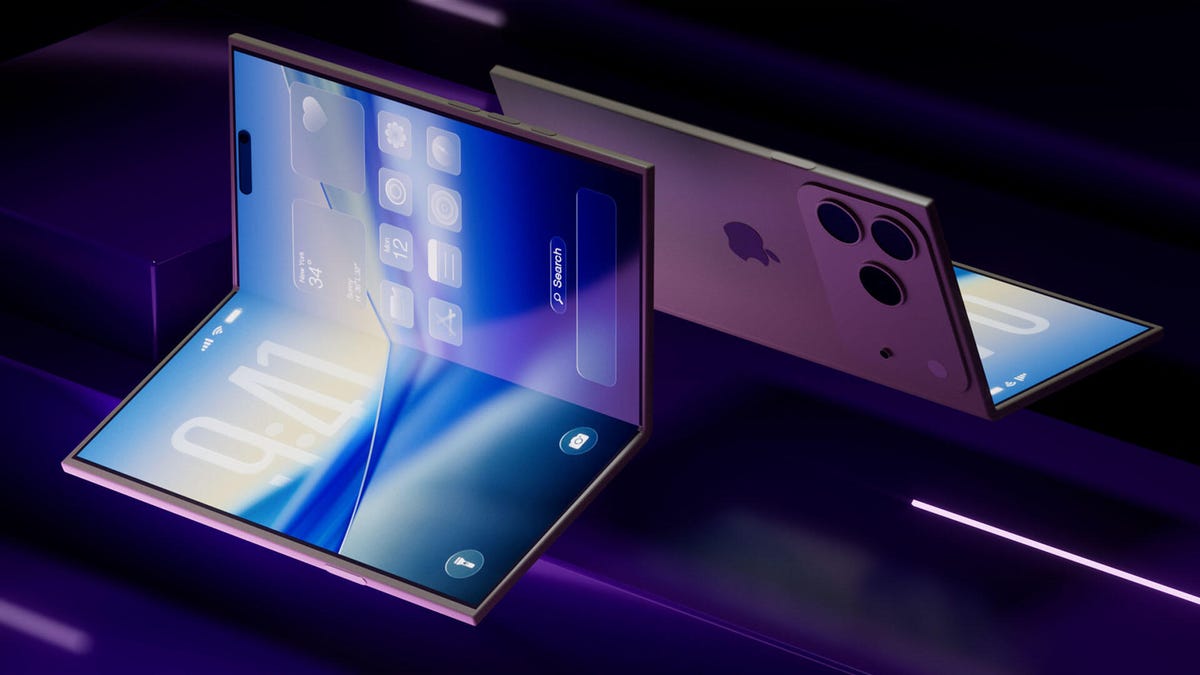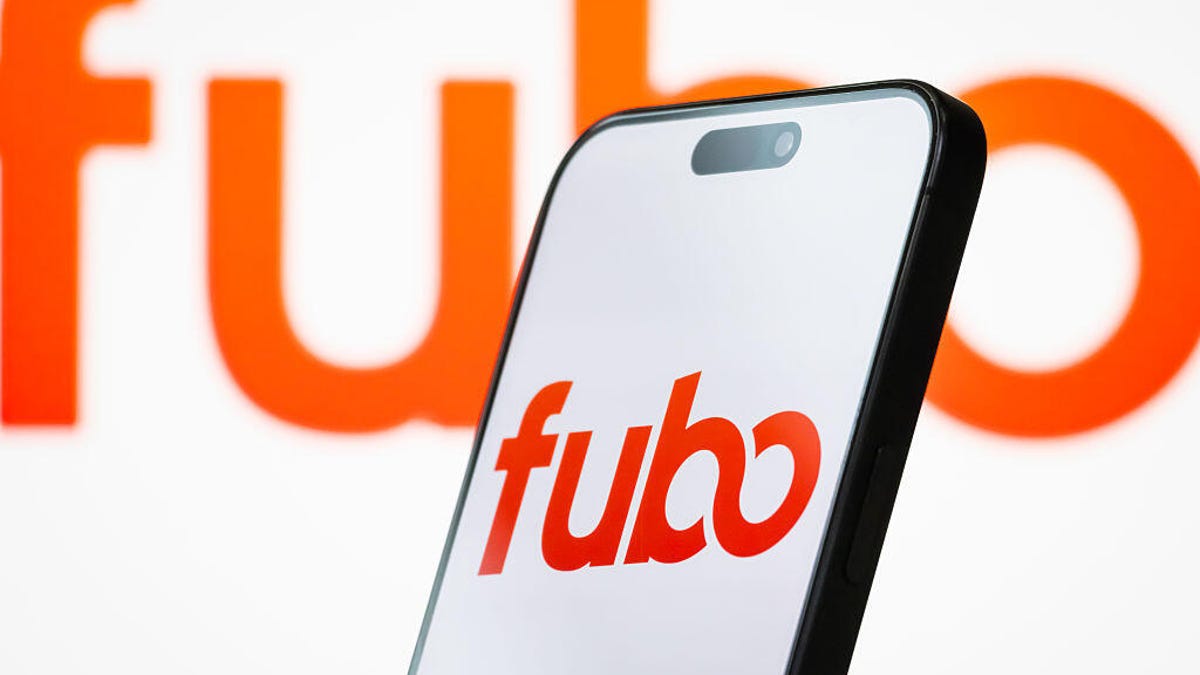Technologies
The Dead Space Remake May Be the Best Video Game Remake Ever
Commentary: The king of sci-fi horror is back.

Whether you played the original Dead Space or not, you’re gonna want to play the remake.
For the uninitiated, the original Dead Space was a sci-fi survival horror game set in the 26th century. Players step into the role of engineer Isaac Clarke, part of a small crew sent to the USG Ishimura, a giant mining ship, to do repairs. But in true horror fashion, the Ishimura has become something of a ghost ship. Only a few crew members have survived thanks to the Necromorphs, the zombie/alien monsters responsible for a bloody massacre on the ship.
What makes this Dead Space remake so special is how it remains true to the original classic but somehow manages to completely reinvent the experience at the exact same time.
Dead Space Remake does have an advantage over other, similar remakes such as Resident Evil 2 and 3. The original game came out in 2008 — its controls haven’t had enough time to date poorly. The same goes for the visuals. The original Dead Space looked fantastic back in 2008 and still looks good in 2022. Still, it’s hard to deny the forward strides made in this new remake. This is a fantastically made video game.
Visually, the remake is stunning. The lighting effects are some of the best found in any video game out there. Dark rooms feel unnerving and creepy in contrast with other areas basked in bright lights, creating a more welcoming environment, which made me lower my guard at just the right moments.
As beautiful as Dead Space looks, there are a few minor issues I came across. In rooms where there’s smoke or mists, Necromorphs are a little too hard to see. The same can be said for areas in total darkness where the only source of light is the one that is emitted when pointing a weapon.
The remake feels like the original — in a good way. Multiple times while playing I paused to look up YouTube clips of the 2008 original game and directly compare the two. I didn’t even notice the «new» content in the remake because, in my mind, that content was already there. It was seamlessly integrated. I assumed I’d just forgotten about it since it’s been over a decade since I played the original.
Dead Space is even more phenomenal when taking in the audio. Sound pours through the speakers with distant screams of pain echoing off the ship’s metal hallways.
This time round we have a voice actor for Isaac. In the original, Isaac was a silent protagonist who didn’t utter a word, just grunts and screams. Now he has a voice, but developer Motive Studio made the smart move by giving him limited dialogue. In the original, other characters delivered exposition with zero input from Isaac. This time around, his dialogue creates a more natural conversation between characters while conveying the same points as the original.
Dead Space made some other changes to the original as well, but like with Isaac’s voice acting, it doesn’t distract and seems as if it was always there. When exploring the Ishimura, there are times when Isaac will come across an area with zero gravity. He can move around effortlessly in all directions, which is a big difference from the original. Necromorphs will also show up in these areas, causing for some interesting zero-gravity combat where you blast them away while being upside down.
The boss monsters also changed in the remake, but again, I didn’t notice until I actually went back and watched the original.
Dead Space also expanded on the franchise storyline. Dead Space’s original plot unfolded quite slowly with the explanation of what was behind the Necromorphs coming much later in the game. This time around, there are earlier mentions of what’s really behind the horror taking over the ship.
Helping with this narrative expansion are new side missions. These quests require more exploration of the Ishimura while also adding more details to the plot. And like everything else found in the remake, these additions were harmonious.
If there’s one word to summarize the Dead Space remake, it’s seamless. Practically every decision made in this game was done to make players like myself feel like these new additions were already in the original. This is remarkably tricky to do, but Motive pulled it off, making Dead Space something fans of the original and newcomers will enjoy equally.
Dead Space comes out on Friday on PC for $60 and on Xbox Series and PS5 for $70.
Technologies
Today’s NYT Mini Crossword Answers for Wednesday, Nov. 26
Here are the answers for The New York Times Mini Crossword for Nov. 26.

Looking for the most recent Mini Crossword answer? Click here for today’s Mini Crossword hints, as well as our daily answers and hints for The New York Times Wordle, Strands, Connections and Connections: Sports Edition puzzles.
Need some help with today’s Mini Crossword? It’s a tough one for a change! Think transit — maybe the kinds some people might take to get home for Thanksgiving. Read on for the answers. And if you could use some hints and guidance for daily solving, check out our Mini Crossword tips.
If you’re looking for today’s Wordle, Connections, Connections: Sports Edition and Strands answers, you can visit CNET’s NYT puzzle hints page.
Read more: Tips and Tricks for Solving The New York Times Mini Crossword
Let’s get to those Mini Crossword clues and answers.
Mini across clues and answers
1A clue: Greyhound, e.g.
Answer: BUS
4A clue: Passenger’s walkway on a 1- or 6-Across
Answer: AISLE
6A clue: The Wolverine to Chicago’s Union Station, e.g.
Answer: TRAIN
7A clue: Barely beat, with «out»
Answer: EDGED
8A clue: «___ out!» (ump’s cry)
Answer: YER
Mini down clues and answers
1D clue: Feathered creature, in kid-speak
Answer: BIRDY
2D clue: Electricity bill calculation
Answer: USAGE
3D clue: More like a fox
Answer: SLIER
4D clue: Past-tense verb that sounds like a number
Answer: ATE
5D clue: Redundant word before «result»
Answer: END
Technologies
iPhone Fold Will Be Creaseless and Cost $2,400, Report Says
Apple’s first foldable could be an expensive one.

The first foldable iPhone could be less than a year away, and reportedly, you won’t ever see a crease. You could, however, see a decent dent in your wallet.
According to a report by Chinese publication UDN, engineers have made «breakthroughs» in creating a «crease-free design» for the iPhone Fold, and the product cycle has now moved past the experimental stage to pre-mass production mode. The Fold reportedly could be launched in September 2026.
Apple did not immediately respond to a request for comment.
Don’t miss any of our unbiased tech content and lab-based reviews. Add CNET as a preferred Google source.
But you’ll pay dearly for the iPhone‘s creaseless screen. Another report by Fubon Research says the iPhone Fold could cost as much as $2,399, which would make it the most expensive foldable phone on the market — higher than the Google Pixel 10 Pro Fold, the Samsung Galaxy Flip 7, Samsung Galaxy Z Fold 7, Motorola Razr Ultra and Motorola Razr, all which range between $700 and $2,000.
More from CNET: A Word of Warning to Apple About the Fold
The reported $2,400 price tag might pack a wallop, but so could the Fold’s possibly game-changing design quality. The market has steadily grown since the first foldable phone was launched in 2018, but no one has yet been able to make one that doesn’t show a crease after several folds. The OnePlus Open has the least visible crease of all the foldables — there’s even a subreddit extolling the virtues of its near-creaseless-ness. But a crease is still a crease.
‘No crease is a hard feat!’
Jessica Naziri, a content creator focused on tech made for women at TechSesh.co, says, «2026 is the year of foldables.»
«We’ve been begging our phones to behave like laptops, and this gets us a lot closer to that reality,» Naziri told CNET. «If Apple is doing it, you know it will be good. Between the iPhone Air and the upcoming foldable, it’s nice to finally see Apple trying new form factors.
Despite the high price, Naziri says consumers will still pony up.
«Obviously, the engineering feat is expected to come with a premium price tag, and people will find a way to save up and pay up,» she said.
Creaseless comes at a cost
The UDN report said that teams from Apple, NewRixing and Amphenol have been collaborating on key component bearings to avoid the iPhone Fold showing creases. Those teams have used high-strength hinge component technology made of liquid metal to improve folding durability, according to the report.
The inner screen is developed by Samsung Display, and the panel structure, material handling and lamination are designed by Apple, the report said. UDN also said that Taiwan-based Hon Hai Technology Group has created a production line where several dozen iPhone Fold devices will be initially manufactured for testing before mass production begins.
The advanced components and design work led to the hefty consumer cost, however. Fubon Research analyst Arthur Liao said the OLED panel, hinge and lightweight internals will help drive up the price of the iPhone Fold. He also said that RAM prices have risen 75% in the past year, and total material cost could go up between 5% and 7% in 2026 because of increased demand for chips, memory and storage.
Technologies
Fubo Loses NBCUniversal Channels, Putting Your NBA Games in Jeopardy
Sound the carriage dispute Klaxon: Some network programming has disappeared from the streaming service after content negotiations fell through.

If you’ve noticed your favorite show has recently gone missing from Fubo, it’s probably because an entire block of programming just disappeared from the site’s channel lineup.
The live TV streaming service is engaged in a carriage dispute with NBCUniversal, a media company whose subsidiaries include NBC News, Universal Studios, Peacock, Telemundo and Illumination, among other brands.
On Nov. 21, NBCUniversal pulled all of its networks from Fubo. This is an especially big deal for sports watchers on the streaming service, since the Fubo Sports subscription — which began earlier this year — depends on the licensing agreement with NBCUniversal. However, viewers can still access sports content on networks like ESPN, CBS and ABC.
Fubo released a statement on Tuesday, alleging the media giant is engaging in «discriminatory tactics» that are harming the streamer’s subscribers.
«NBCU is discriminating against Fubo and our subscribers,» the statement says. «They allowed YouTube TV and Amazon Prime to integrate Peacock directly into their channel store, but refused to give Fubo the same rights.»
Don’t miss any of our unbiased tech content and lab-based reviews. Add CNET as a preferred Google source.
Fubo says NBCUniversal is trying to force a multiyear deal for certain channel packages under the media giant’s new spin-off media company, Versant, and that it’s trying to upcharge on the Fubo Sports subscription by adding «expensive, non-sports channels» into the agreement, increasing the cost.
According to NBCUniversal’s website, the Versant brands include CNBC, E!, MS Now, SyFy and USA, among other channels.
NBCUniversal did not respond to a request for comment.
Fubo says that it’s willing to move forward without NBCUniversal content if an agreement cannot be reached.
«Fubo is committed to bringing its subscribers a premium, competitively-priced live TV streaming experience with the content they love,» its statement concludes. «That includes multiple content options, including a sports-focused service, that can be accessed directly from the Fubo app.»
Fubo recently became an affiliate of The Walt Disney Company, following its merger with Hulu’s live TV platform in October. It’s unclear whether this merger affected content agreement negotiations with NBCUniversal. Fubo did not respond to a request for comment on this.
-

 Technologies3 года ago
Technologies3 года agoTech Companies Need to Be Held Accountable for Security, Experts Say
-

 Technologies3 года ago
Technologies3 года agoBest Handheld Game Console in 2023
-

 Technologies3 года ago
Technologies3 года agoTighten Up Your VR Game With the Best Head Straps for Quest 2
-

 Technologies4 года ago
Technologies4 года agoBlack Friday 2021: The best deals on TVs, headphones, kitchenware, and more
-

 Technologies4 года ago
Technologies4 года agoVerum, Wickr and Threema: next generation secured messengers
-

 Technologies4 года ago
Technologies4 года agoGoogle to require vaccinations as Silicon Valley rethinks return-to-office policies
-

 Technologies4 года ago
Technologies4 года agoOlivia Harlan Dekker for Verum Messenger
-

 Technologies4 года ago
Technologies4 года agoiPhone 13 event: How to watch Apple’s big announcement tomorrow
